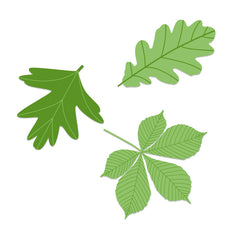
Nature picnic games
Wherever you choose to picnic you’ll be in touch with nature but trying to get the whole family interested in the natural world can sometimes be tricky. If you’re looking for a few fun learning activities to entertain and educate your family, you’ve come to the right place. We have some nature-related picnic games to keep the youngsters amused. Who knows, whilst they play you might even get a glimpse of that rare natural phenomenon – a bit of peace and quiet.
DOWNLOAD THE PDF HERE
A4 OR PRINT AND FOLD TO POCKET SIZE
UNDER 5s
Mini Beasties
Fun fact: Snails eyes are on long stalks, and worms don’t have any eyes at all.

Game: Beastie Impressions
Agree on the movements for four different animals then use these movements to race once around the mat each time an animal is called. Finish each turn by sitting on that animal on the mat. For example:
Story Corner
Fun fact: Foxy-Loxy, Henny-Penny and Ducky-Lucky are all animals in the children’s story Chicken Licken. Wormy-Squirmy and Anty-Banty aren’t.

Game: Story Noises
Tell a story set in a natural setting. Explain that every time you mention some creatures or things, the listeners have to repeat certain words three times. You’ll probably need a rehearsal before the story starts. For example:

Leaf-Tastic
Fun fact: If you were a tree, losing your leaves in autumn would be like going to bed for the whole winter.
Game: Under-Leaf
Each player finds the biggest leaf they can then sits down on the mat with it. Taking it in turns they describe a creature that is ‘hiding’ under the leaf using the three categories, colour, legs and noise. The first player to guess what the creature is gets a turn to give a description. For really young children limit the descriptions to just the colour or sound. For example:
The Flight of the Ladybird
Fun fact: Ladybirds are actually a type of beetle and some of them are boys.
Game: Fly Away Home
This is a version of Simon Says. The caller gives instructions using the phrase ‘Mrs Ladybird says’. These could include things like ‘sit down’, ‘jump on the spot’ or ‘nod your head’. When Mrs Ladybird says, ‘Fly away home’, the players have to run three times around the mat then pretend to fall asleep on it. Just like in Simon Says, the trick here is to try to catch the players out with an instruction that doesn’t mention Mrs Ladybird.

UNDER 11s
Wild Mushrooms
Fun fact: Mushrooms and trees can sometimes be good friends. Trees give mushrooms carbohydrates, and mushroom help keep trees moist. We call this symbiosis.
Game: There’s not mush-room on here!
Players stand in a line a couple of metres away from the mat. They take it in turn to call out an item on the mat, and everyone has to rush over and stand so that at least one foot is touching the item. There’s one exception to the rule, if ‘mushroom’ is called everybody must stay off the mat and point at the mushroom. Anyone who forgets this rule and steps on the mat is out.

Nature’s Bounty
Fun fact: Urban (town) habitats are just as important for nature as countryside ones. You can encourage wildlife into your garden by letting the grass grow longer, feeding the birds, and building insect hotels.
Game: Nature trail
Players take it in turns to tell the nature trail story. Starting with, ‘I went on a nature trail, and I found’ each adds their own item to the list then recites all the previous items. For a harder game add a place name with the same initial letter. For example:
Snail Trails
Fun fact: Did you know that snails use their slimy trails to communicate with each other?
Game: Snail Whispers
Stand in a line one behind the other. The person at the back of the line uses their finger to draw one of the nature pictures from the mat on the back of the person in front of them. This message is repeated in the same way down the line. When the person at the front of the line receives the ‘message’, they have to point to the correct picture on the mat.

Bee Hive Yourself
Fun fact: Bees all have their own specialist jobs to do. Researchers have found out that some of them are even good at maths!
Game: Buzzy Bee
Starting at one, with each player saying one number, take it in turns to count upwards. Every time you come to a number that can be divided by three replace it with the word ‘buzz’. Each time you come to a number that can be divided by five, replace it with the word ‘bee’. The fun comes when you get up to fifteen, which can be divided by both. Then you need to say ‘buzzy bee’.
If a player gets it wrong they have to ‘fly’ round like a bee until the next person makes a mistake.
Habitat Happenings
Fun fact: Nature can exist in all kinds of strange places. Sometimes a creature’s name gives a clue to its habitat. Sea squirts, field voles and even hedgehogs are great examples of this.
Game: Happy Habitats
This is a version of the game Twister. Players take it in turns to be the caller and shout out different habitats together with a part of the body. The other players have to put that part of the body onto something on the picnic mat that can be found in that habitat. For example:

Trail Tracking
Fun fact: Badgers and otters both have five toes but you can tell a badger print by its long claw marks (otters have webbed toes).


